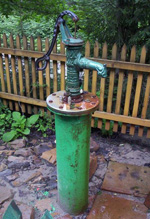
Groundwater Over-pumping
At some point, you may have watched a cartoon that shows a character traveling across a scalding hot desert, parched and about to faint. Just in time, a well pump appears on the horizon. They run to the well and pump and pump, hoping for a cool drink of water. Most of the time, the water eventually comes up from the well. But what if you pump and nothing comes up? As you saw in the Texas case study, it is possible for groundwater to be over-withdrawn from an aquifer. In other words, we sometimes pump up so much groundwater that natural recharge does not fill the aquifers back up, and we end up with a water shortage.
As a result of all the uses of groundwater that you just learned about, groundwater is often over-used. This can have serious consequences. Click through the tabs to learn about some consequences of groundwater over-pumping.
Water Shortages
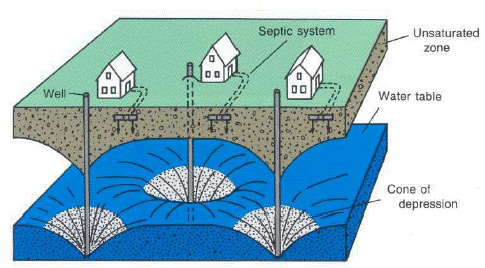
Saltwater Intrusion
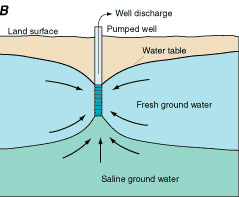
Saltwater intrusion is the movement of saltwater into freshwater aquifers. It commonly happens in coastal areas after groundwater has been over-pumped, because saltwater from nearby oceans and bays will move in to take the place of the removed groundwater. Saltwater cannot be used for drinking water; this is a serious problem.
Land Subsidence
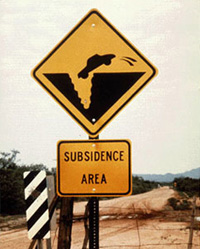
In the Winter of 2010, the normally warm area around Plant City, Florida had an unusual cold snap. The temperatures dived down below freezing for several days in a row; freezing temperatures are deadly to strawberry plants. Strawberry farmers in the area pumped huge amounts of groundwater from the aquifers to spray on their plants, in an effort to blanket them in a warm, protecting layer of water. Within days, several roads and schools in the area had to be shut down because the massive over-pumping of groundwater had lowered the water table to the point that the local land began collapsing from under people. The water table is just a few feet below the surface in some parts of Florida, and it sometimes holds up the land above it. When the water is suddenly pumped out, the overlying land collapses. This is called land subsidence, and it can happen anytime groundwater over-pumping occurs.
Example of Land Subsidence
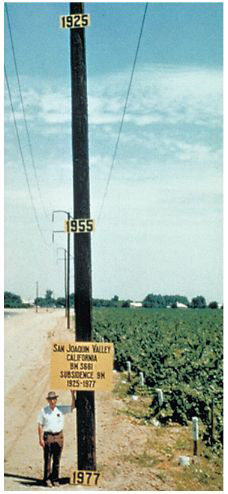
This picture shows you an example of the consequences of land subsidence. Notice the date markers, with 1925 at the top and 1977 at the bottom. These markers show the level of the land in San Jose, California over just 52 years. You can see how much the land dropped during that time due to subsidence, which probably resulted from groundwater over-pumping from agricultural land. The soils and rocks that overlie an aquifer put lots of pressure on the groundwater. When the groundwater is removed, the entire aquifer collapses. Once an aquifer collapses and subsides, it cannot be restored.
Ecological Consequences
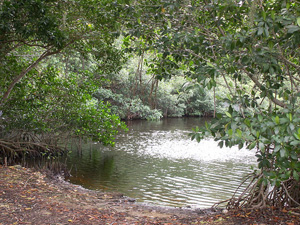
Over-pumping groundwater also leads to ecological problems. Remember that groundwater feeds local streams at points of discharge. If groundwater is over-pumped, streams and wetlands can dry up. This harms local wildlife that depends on the streams for water, food, and habitat.